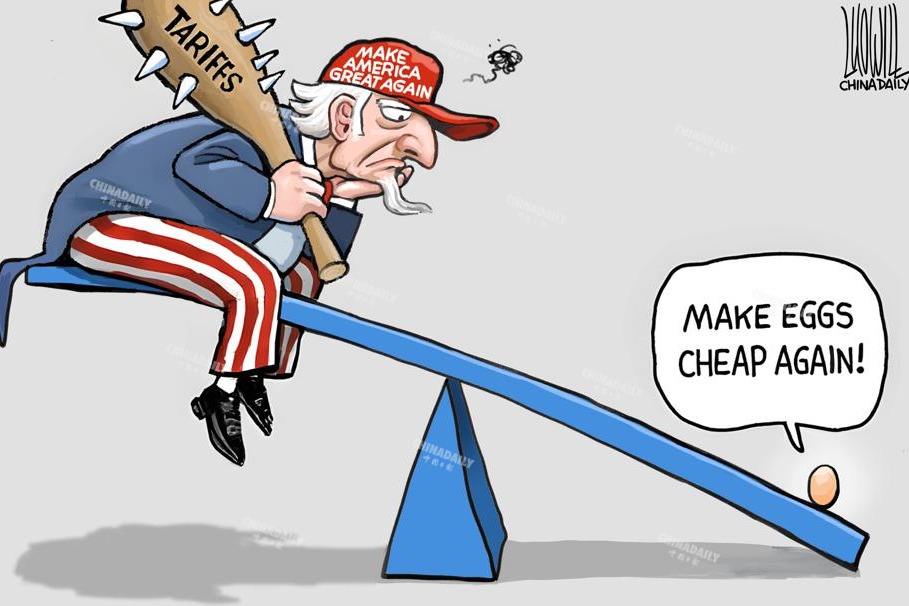US isolating itself in global trade

Collective efforts needed for trade liberalization
The core motivation behind the US government's recent tariff escalation lies in its discontent with the current international trade paradigm. Policymakers contend that America faces structural disadvantages within the existing system, particularly manifesting in comparatively lower US tariff rates versus higher tariff barriers maintained by other nations. This perceived imbalance purportedly undermines the competitiveness of American products in global markets. The new tariff regime pursues threefold objectives: reducing the US trade deficit, enhancing the export competitiveness of domestic products, and catalyzing manufacturing repatriation.
The implementation of this policy will trigger significant ripple effects. Export-oriented economies — including the European Union, China and various developing nations — face immediate repercussions. Elevated tariff barriers directly increase production costs and complicate trade logistics for goods destined for American markets. While retaliatory measures remain undefined, historical precedents suggest coordinated countermeasures could partially neutralize the policy's efficacy. However, the more probable scenario involves partial acquiescence from trading partners, potentially emboldening America's unilateral protectionist tendencies.
Confronted with these challenges, China must adopt a multi-pronged counterstrategy. Primary priorities include stabilizing domestic market expectations through enhanced confidence-building measures and cultivating endogenous demand to mitigate external shocks. Concurrently, efforts should focus on reinforcing supply chain resilience through diversified production ecosystems, thereby reducing overdependence on singular markets. This structural adjustment will organically drive industrial upgrading while consolidating China's position in global value chains. Internationally, proactive expansion of trade partnerships and exploration of alternative production networks become imperative.
The current unilateral tariffs fundamentally erode the WTO-centered multilateral trade architecture, particularly violating the most favored nation (MFN) principle. To safeguard the international trade order, China should galvanize collective efforts toward trade liberalization. Practical measures include intensifying the implementation of regional trade agreements under WTO frameworks and strategically lowering tariffs to counterbalance protectionism — a tactic proven effective during previous Sino-US trade tensions. This approach not only enhances domestic production efficiency but also stimulates innovation through market openness, partially offsetting global market contraction induced by protectionist measures.
Zhou Mi is a research fellow at the Chinese Academy of International Trade and Economic Cooperation.


































